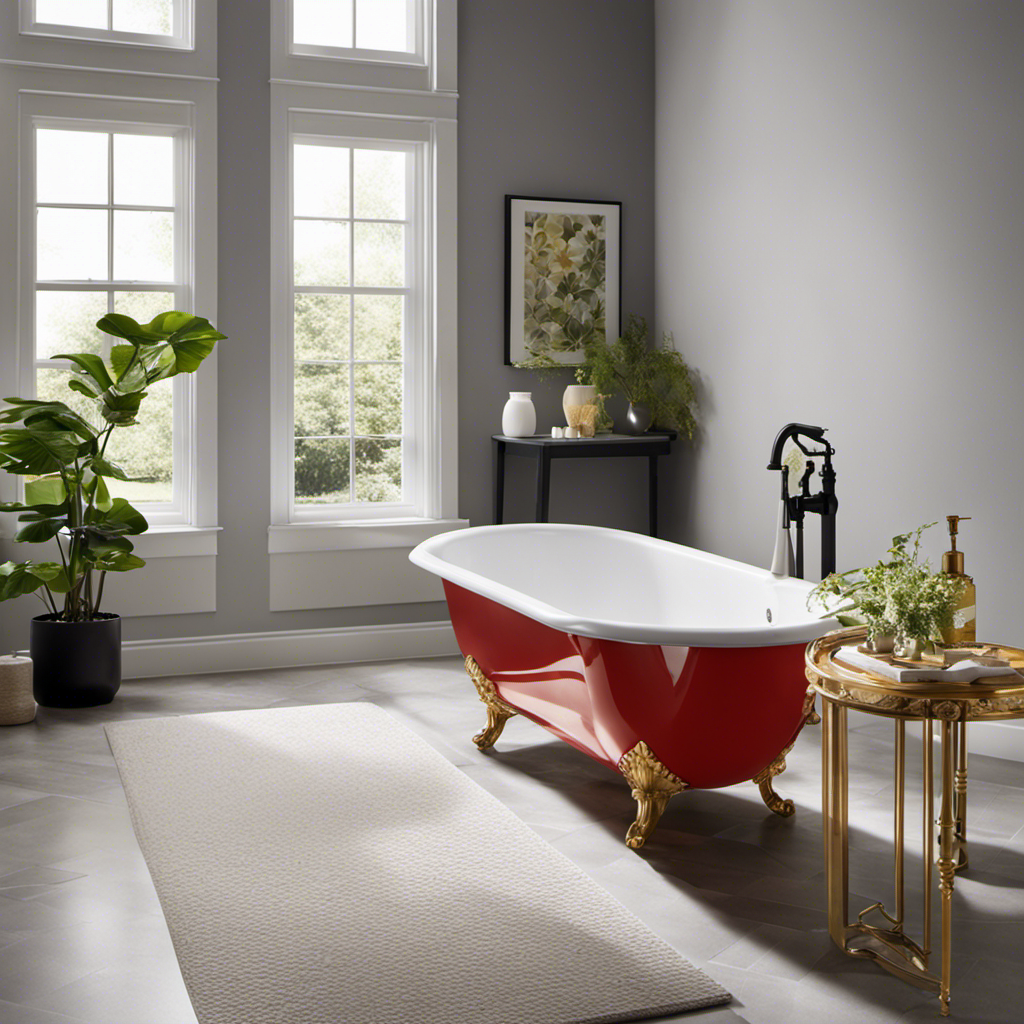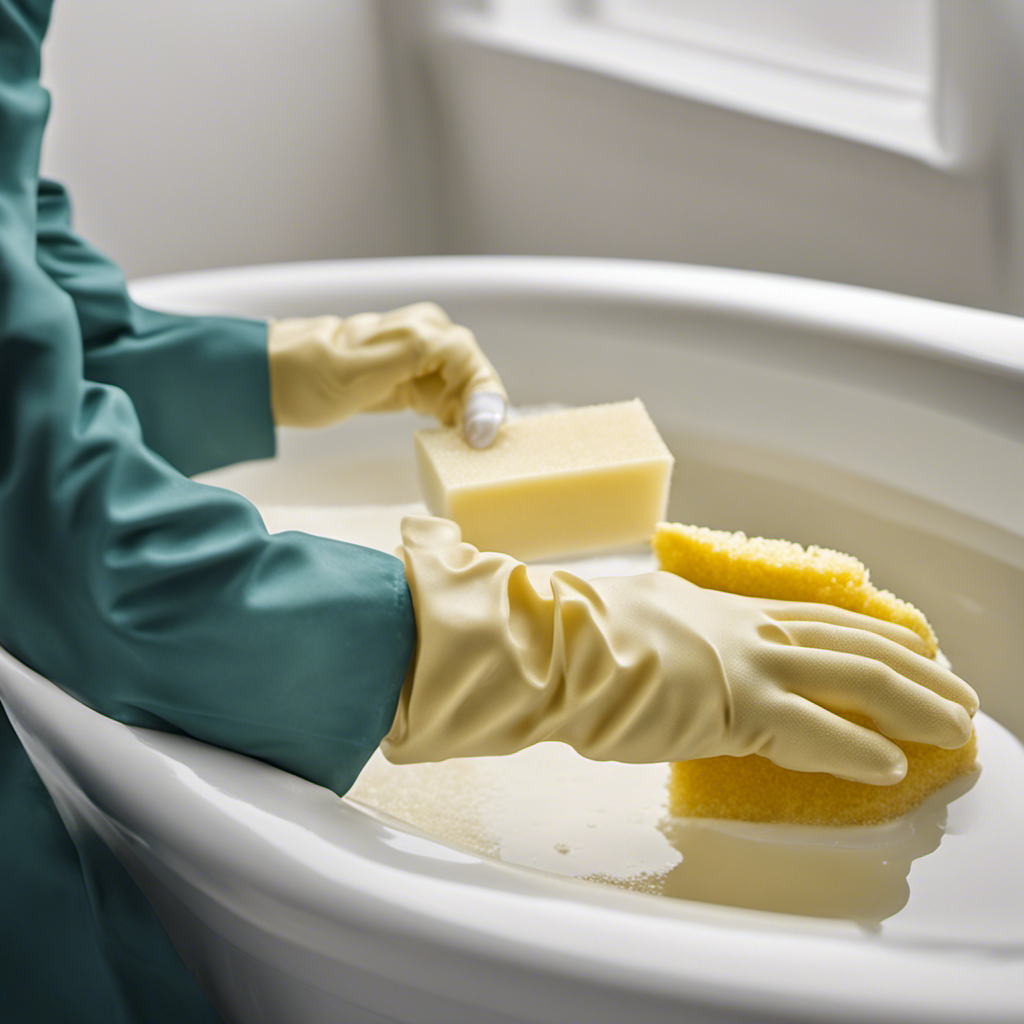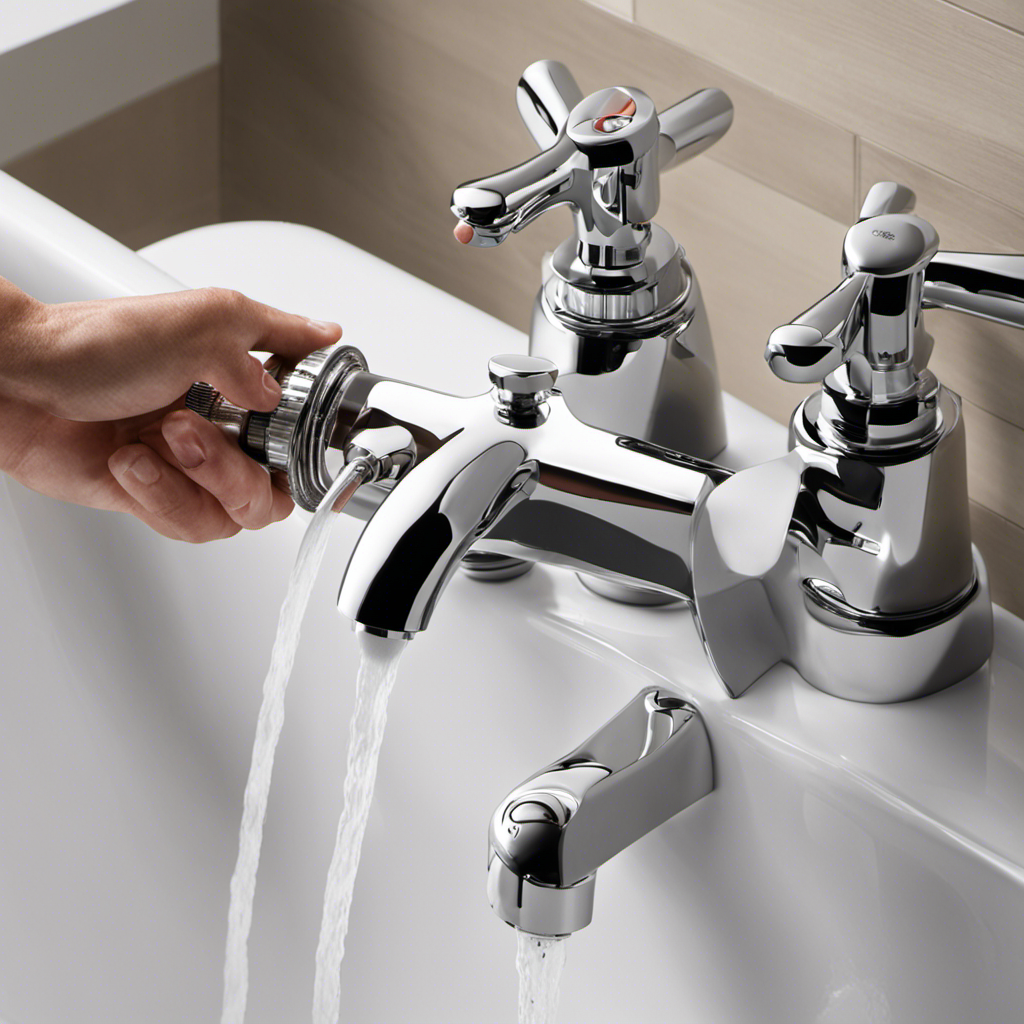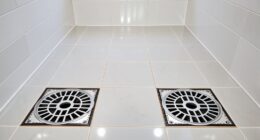Did you know that nearly 70% of bathroom injuries occur while getting out of the bathtub? If you want to avoid becoming part of that statistic, then keep reading.
In this article, I will guide you through the proper technique for getting out of the bathtub without using your knees. By utilizing arm strength, using a supportive bathing aid, and implementing strategies for maintaining balance, you can safely and confidently exit the bathtub.
Additionally, I will provide alternative methods and important safety precautions to consider.
Key Takeaways
- Proper technique and utilizing arm strength are crucial for safely getting out of the bathtub without using your knees.
- Using supportive bathing aids can provide stability, increase safety, and reduce strain on joints while getting out of the bathtub.
- Engaging core muscles, maintaining balance, and using handrails can help prevent falls and maintain stability when getting out of the bathtub.
- Building arm strength through exercises like tricep dips, push-ups, bicep curls, and resistance band pulls can make it easier to lift your body out of the bathtub.
The Importance of Proper Technique
Proper technique is crucial when trying to get out of the bathtub without using your knees. By improving flexibility and preventing injuries, you can safely and effectively maneuver yourself out of the tub.
To start, place both hands on the edge of the tub and shift your weight forward. Engage your core muscles and slowly lift your body up, using the strength in your arms and upper body. Keep your back straight and avoid twisting or jerky movements.
As you lift yourself, make sure to distribute your weight evenly between both arms to maintain balance. Once you have successfully lifted your body out of the tub, you can then transition into utilizing your arm strength to assist in standing up.
Utilizing Arm Strength
To avoid strain on your knees, you can try using your arm strength to push yourself up from the bathtub. Here are four strengthening exercises that can help you build the necessary arm strength to maintain your independence:
-
Tricep Dips: Sit on the edge of a sturdy chair or bench, place your palms on the edge, fingers pointing towards you, and lower your body down by bending your elbows. Push yourself back up using your arms.
-
Push-Ups: Start in a plank position, hands shoulder-width apart. Lower your body by bending your elbows, keeping your back straight, and push yourself back up.
-
Bicep Curls: Hold a pair of dumbbells in your hands, palms facing forward. Bend your elbows and bring the dumbbells towards your shoulders. Lower them back down and repeat.
-
Resistance Band Pulls: Attach a resistance band to a doorknob. Hold the other end with your palm facing up. Pull the band towards your body, bending your elbow. Slowly release and repeat.
Using a Supportive Bathing Aid
When it comes to bathing aids, there are numerous benefits to using them. These aids provide support and stability, making bathing safer and more comfortable.
Additionally, there are different types of supportive aids available, such as bath seats, grab bars, and handrails, each designed to address specific needs and preferences.
Benefits of Bathing Aids
If you’re looking for a way to make getting out of the bathtub easier, using bathing aids can provide several benefits. Here are some reasons why you should consider using them:
-
Increased safety: Bathing aids such as grab bars and bath mats provide stability and prevent slips and falls while getting in and out of the tub.
-
Enhanced independence: With the help of bathing aids, individuals can maintain their privacy and bathe independently without relying on others for assistance.
-
Reduced strain on joints: Bathing aids like bath lifts and transfer benches alleviate the pressure on knees and other joints, making it easier and more comfortable to get in and out of the tub.
-
Improved confidence: The use of bathing aids gives individuals a sense of control and confidence, knowing that they have the necessary support to safely navigate the bathing process.
Types of Supportive Aids
Explore the various types of supportive aids available to find the one that best suits your needs. When it comes to bathroom modifications and physical therapy exercises, having the right supportive aids can make a significant difference in your daily routine. There are several options to consider, including grab bars, transfer benches, shower chairs, and raised toilet seats. Each aid serves a specific purpose and can provide the necessary support and stability you need. Take a look at the table below for a breakdown of these aids and their features:
| Supportive Aid | Purpose | Features |
|---|---|---|
| Grab Bars | Assist with balance and stability | Securely mounted to the wall, available in various lengths and materials |
| Transfer Benches | Facilitate getting in and out of the bathtub | Adjustable height, non-slip surface, armrests for support |
| Shower Chairs | Provide a place to sit while showering | Lightweight, adjustable height, non-slip feet, backrest and armrests |
| Raised Toilet Seats | Make it easier to sit down and stand up from the toilet | Adds height, secure attachment, padded options available |
Strategies for Maintaining Balance
To maintain balance while getting out of the bathtub, try using the edge of the tub for support. This can help prevent falls and injuries.
Here are some strategies to help you maintain balance:
-
Body positioning: Stand with your feet shoulder-width apart and your knees slightly bent. This will provide a stable base of support.
-
Core strength: Engage your core muscles by tightening your abdominal muscles. This will help stabilize your body and maintain balance.
-
Slow movements: Take your time when getting out of the bathtub. Avoid sudden movements or jerks, as they can throw off your balance.
-
Use handrails: If your bathtub has handrails, use them for support. Hold onto them firmly while standing up to provide extra stability.
Alternative Methods for Standing Up
When getting out of the bathtub, consider alternative methods for standing up, such as using the edge of the tub for support or utilizing handrails if available. These options can be especially helpful if you have difficulty using your knees.
Another option to consider is performing water exercises to strengthen your legs and improve your balance. Water provides buoyancy, which reduces the impact on your joints and makes it easier to move. Exercises like water walking, leg lifts, and squats can help build strength and stability in your legs.
Additionally, if you have significant difficulty getting in and out of the bathtub, you may want to explore the option of installing a chair lift. Chair lifts are mechanical devices that can safely lift you in and out of the tub, eliminating the need to rely heavily on your knees.
Safety Precautions to Consider
One important safety precaution to consider is utilizing handrails or grab bars for support when getting in and out of the bathtub. These assistive devices are essential for ensuring bathroom accessibility and preventing falls or accidents.
Here are four important reasons why handrails or grab bars are necessary:
-
Stability: Handrails provide a stable support system, allowing you to maintain balance while maneuvering in the bathroom.
-
Independence: With the help of handrails or grab bars, individuals can safely transfer themselves in and out of the bathtub without relying on others.
-
Confidence: Having a secure grip on handrails or grab bars boosts confidence, reducing the fear of slipping or falling.
-
Versatility: Handrails or grab bars can be installed in various locations, such as near the bathtub, toilet, or shower, providing support wherever it is needed.
Conclusion
In conclusion, mastering the art of getting out of the bathtub without using your knees is a game-changer. With the right technique and a little bit of arm strength, you can gracefully rise from the tub like a superhero emerging from the water.
And if you want to take it to the next level, try incorporating a supportive bathing aid for added stability and confidence. Remember, balance is key, so don’t be afraid to explore alternative methods and always prioritize safety.
So go ahead, defy gravity and conquer the bathtub with finesse!










